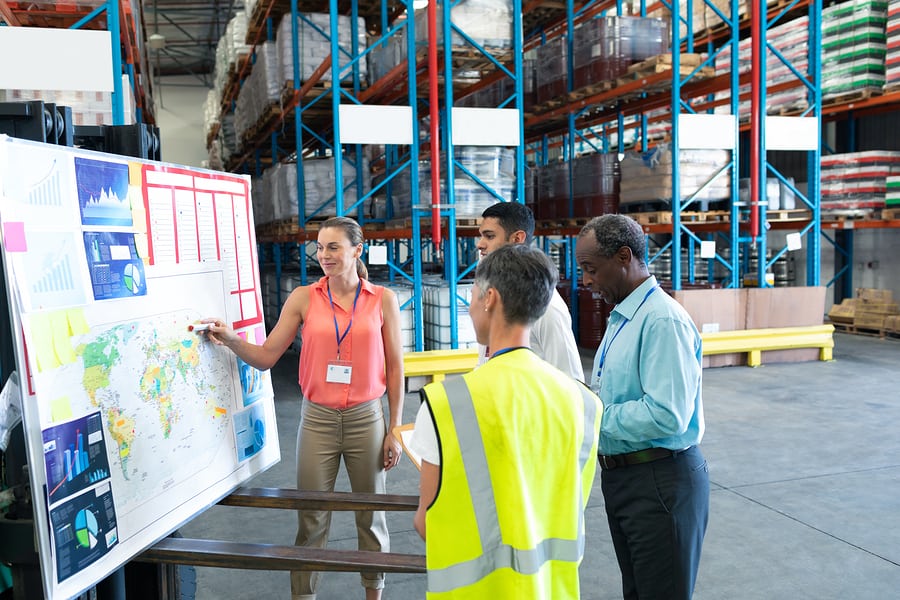Warehouse Safety Guidelines: How to keep your workplace safe
Ensuring a warehouse is a safe environment is not difficult if some standard rules are followed and the benefits can be significant.
A well-designed warehouse safety program will produce impressive outcomes. Sound safety practices that promote overall safety can lead to higher employee satisfaction, lower absenteeism due to injury, increased productivity and overall worker ease.
Here are a few safety guidelines to help keep your warehouse safe:
1. Audit and Improve Safety Equipment at All Times
Appropriate eyewear and hard hats should also be worn when required. Emergency exits should be clearly marked with signage. Sprinkler systems should be inspected and maintained properly. And sprinkler systems in the ceiling of the facility should not be blocked at any time. Eyewash stations should be install as required. First aid kits should be visible and stocked. Ensure you are also protect rack from collisions. Install safety products like Dock Gap Guards.
2. Eliminate Any Potential Safety Hazards
Warehouse floors should be clean and free of hazards. It should be disinfected regularly. Use a disinfectant fogger. A safety audit should be is carried out on a regular basis. If spills or debris is found it should be cleaned as soon as possible. Cracks and pits in the flooring must be repaired. Failure to do so can result in serious injuries to employees, as well as causing damage to machinery.
3. Hazardous Zones and Safety Pathways Should Be Clearly Marked
Heavy equipment should be stored in an area that is clearly marked. Safe walkways should be visible to pedestrians. Maintain the necessary signage. Mark safe transit areas for pedestrians with tape or black and white painted stripes on the floor. Visitors to the facility should be briefed before they are allowed to enter.
4. Promote Safe Lifting Techniques
Transit with a lifted load requires a route check before movement occurs to ensure no obstacles are in the way. Ensure space is available in aisles and at the load’s destination. Forklift safety programs should be in place with all driver training up to date. Safe lifting techniques should always be administered. The lifter should ensure that their view is not obstructed by a load. Material handling trucks and pallet jacks should be used as designed and within on load tolerances. Approved operating procedures should be followed. Unauthorized and untrained personnel should never drive a forklift or other powered equipment.
5. Training Your Staff
Ensure all staff are educated and up to date with knowledge about safe practices within the workplace. This allows for greater adherence to procedures as staff members will be completely aware of the consequences that can emanate from an unsafe workplace. Accidents most commonly occur when corners are cut in an attempt to save time. If staff and management are completely aware of the repercussions that can arise from this fact, procedures may be followed more closely.
6. Train to Ensure Awareness on the Job
Train your staff to ensure they use awareness techniques in the workplace. Create a rule set to standardize communication. This includes vocal cues for alerts and also acknowledgment of movement and other hazardous action. A solid policy that is followed by all workers will reduce the chance of collisions. All workers should be trained to be aware of what’s around them, use communication practices, and follow all safety procedures.
7. Develop Onboarding Procedures
New employees should be trained on all safety and emergency procedures as soon as they start in your facility. These sessions should be documented and follow-ups and refreshed should be conducted on a regular schedule.

